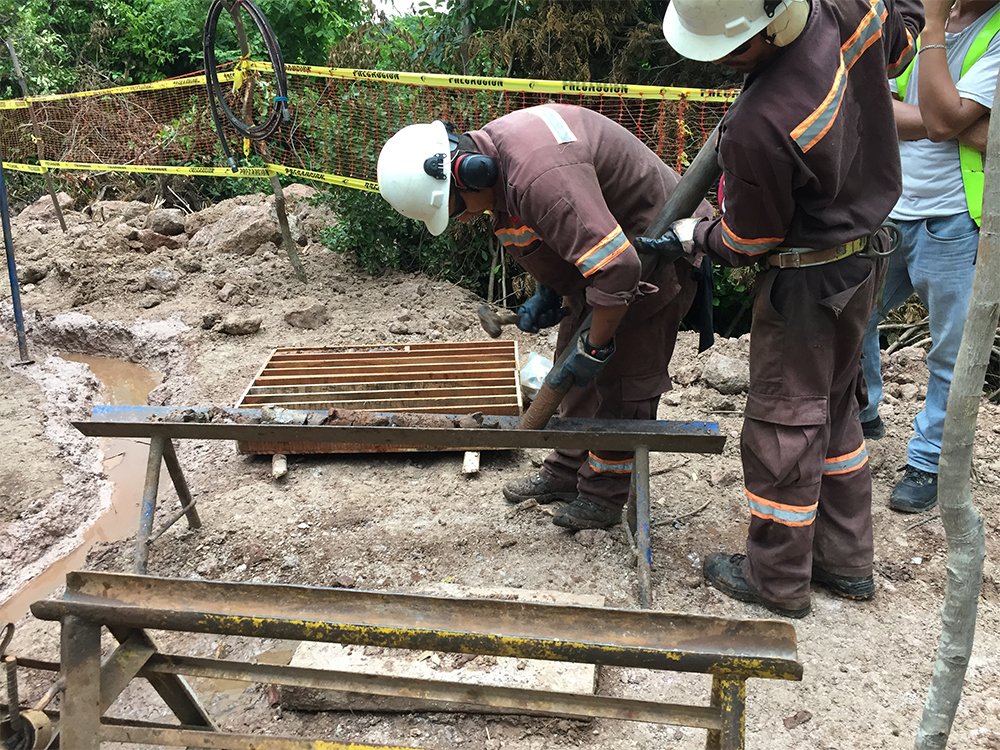Drilling in soft rock is not always a walk in the park. Oftentimes, we associate hard rock as the type of ground that is most difficult to drill in. This is true, and we will address those issues in an upcoming blog. However, soft rock has its own set of challenges. Let’s look at soft rock and how you can avoid problems and be more productive.
According to the Mohs scale of hardness, soft rocks are considered usually between one and around 4. Common types of soft rock that you may be drilling include talc, shale, gypsum, calcite, and limestone. Keep in mind that certain types of rock, such as limestone can fall in different areas of the scale. For example, in the case of limestone, impurities such as silica can raise the hardness to around four. To be sure, you should always do a hardness test on the ground. To complicate things, there are soft-rock conditions; that may have many clay seams in it or sandy parts and each requires a different strategy.
Soft Rock
The choice of core bit is important as you need a matrix that is suited to the hardness of that ground. For soft ground from 3.5 to 5, a core bit such as a Hero 3 will give you good penetration and for ground 4 to 6, Hero 5 would be a good option.
The next thing to consider is the configuration which includes the size of the waterways. For soft grounds, you will need wider waterways to avoid having the waterways get gummed up and to avoid bit-balling. Bit-balling is a condition that arises when soil sticks to the drill bit and forms a ball. This issue can cause several problems such as a reduction in the rate of penetration and surface torque.
Finally, drilling fluid additives such as Torqueless should be used. Torqueless is a great additive that reduces torque and leads to a longer life for your drilling equipment. It lubricates, reduces wear and rusting of the rods, and is great at cooling the core bit.
Soft Rock with Clay
When drilling in soft rock with clay seams or shale you will need to pick a matrix such as a Hero 3 or 5 that is designed for soft ground. Claystone and shale are more prone to bit-balling so wider waterways are a good choice.
Clay and shale also have a tendency to swell, and this swelling can squeeze and put pressure on the drill rods causing your equipment to become stuck in the hole. Drilling fluid additives can help with this problem. DD-955 is a clay and shale inhibitor that is absorbed directly into the clay and shale and reduces in-hole swelling and instability. It should be used with Torqueless which enhances all other polymers and should be added to every mix. Torqueless ensures proper mixing and reduces clumping and waste of product. Learn more about mixing additives for clay and shale here.
Soft Rock with Sand
A mentioned above, choose a matrix suitable to the hardness of the ground. The choice of configuration can be important as the sand is fragile and you should avoid too much water pressure. A wider waterway can reduce the pressure on the hole as a narrow waterway can create a jet that can wash away the sand causing instability.
A Triple tube system can be used in conjunction with a deep lateral discharge bit or a face injection bit to better retrieve fragile friable formations in sand and cobbles. This system allows the driller to run the core lifter case tight to the bit level, reducing wash out of the formation.
A product such as Sand Xpress or Sand Drill is great for sandy conditions as it solidifies non-stable and abrasive grounds such as sand or gravel. In addition to stabilizing the borehole, it helps with core retrieval. With the use of a product such as Sand Drill, the core changes consistency –the Sand Drill is gel-like and it can hold together the crumbly core so that it can be retrieved intact. Learn more about mixing additives for the sandy ground here.
For more info, visit this link page.
Source(s): http://blog.fordia.com/blog/dos-and-donts-for-soft-rock-drilling

